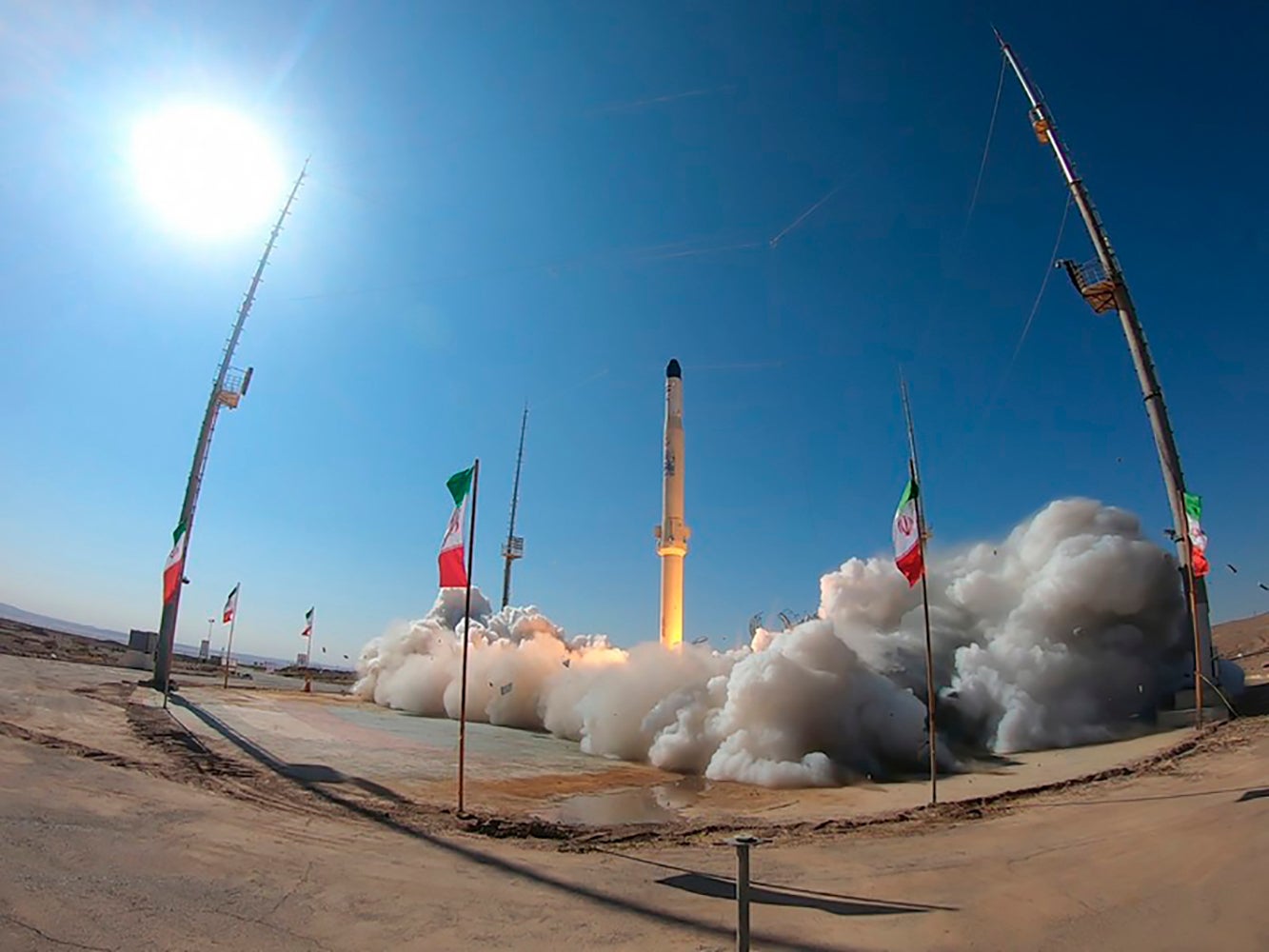Iran state TV airs launch of new satellite-carrying rocket
Iranian state TV has aired the launch of the country’s newest satellite-carrying rocket, which it said was able to reach a height of 500 kilometers (310 miles)

Your support helps us to tell the story
From reproductive rights to climate change to Big Tech, The Independent is on the ground when the story is developing. Whether it's investigating the financials of Elon Musk's pro-Trump PAC or producing our latest documentary, 'The A Word', which shines a light on the American women fighting for reproductive rights, we know how important it is to parse out the facts from the messaging.
At such a critical moment in US history, we need reporters on the ground. Your donation allows us to keep sending journalists to speak to both sides of the story.
The Independent is trusted by Americans across the entire political spectrum. And unlike many other quality news outlets, we choose not to lock Americans out of our reporting and analysis with paywalls. We believe quality journalism should be available to everyone, paid for by those who can afford it.
Your support makes all the difference.Iranian state TV on Monday aired the launch of the country s newest satellite-carrying rocket which it said was able to reach a height of 500 kilometers (310 miles).
The footage of the solid-liquid-fueled rocket showed the launch taking place during daytime in a desert environment. The report did not say when or where the launch happened.
The rocket, named Zuljanah for the horse of Imam Hussein, the grandson of the Prophet Muhammad, did not launch a satellite into orbit.
Iran says its satellite program, like its nuclear activities, are aimed at scientific research and other civilian applications. The U.S. and other Western countries have long been suspicious of the program because the same technology can be used to develop long-range missiles.
Ahmad Hosseini, spokesman for the Defense Ministry's space department, which oversaw the launch, said the rocket is capable of carrying either a single 220-kilogram (485-pound) satellite or up to 10 smaller ones.
He said the test helped Iran to achieve its “most powerful” rocket engine and that the rocket can be launched using a mobile launching pad. State TV said the three-stage rocket uses solid fuel in the first and second stages and fluid fuel in the third.
In the past, Iran has used various fluid-fuel satellite carrier rockets to put smaller devices into orbit. Last year, the paramilitary Revolutionary Guard said it used a Qased, or “Messenger,” satellite carrier to put the Noor satellite into space.
Iran often coordinates its tests of new military and scientific projects with national holidays. It will celebrate the 42nd anniversary of the Islamic Revolution later in February.